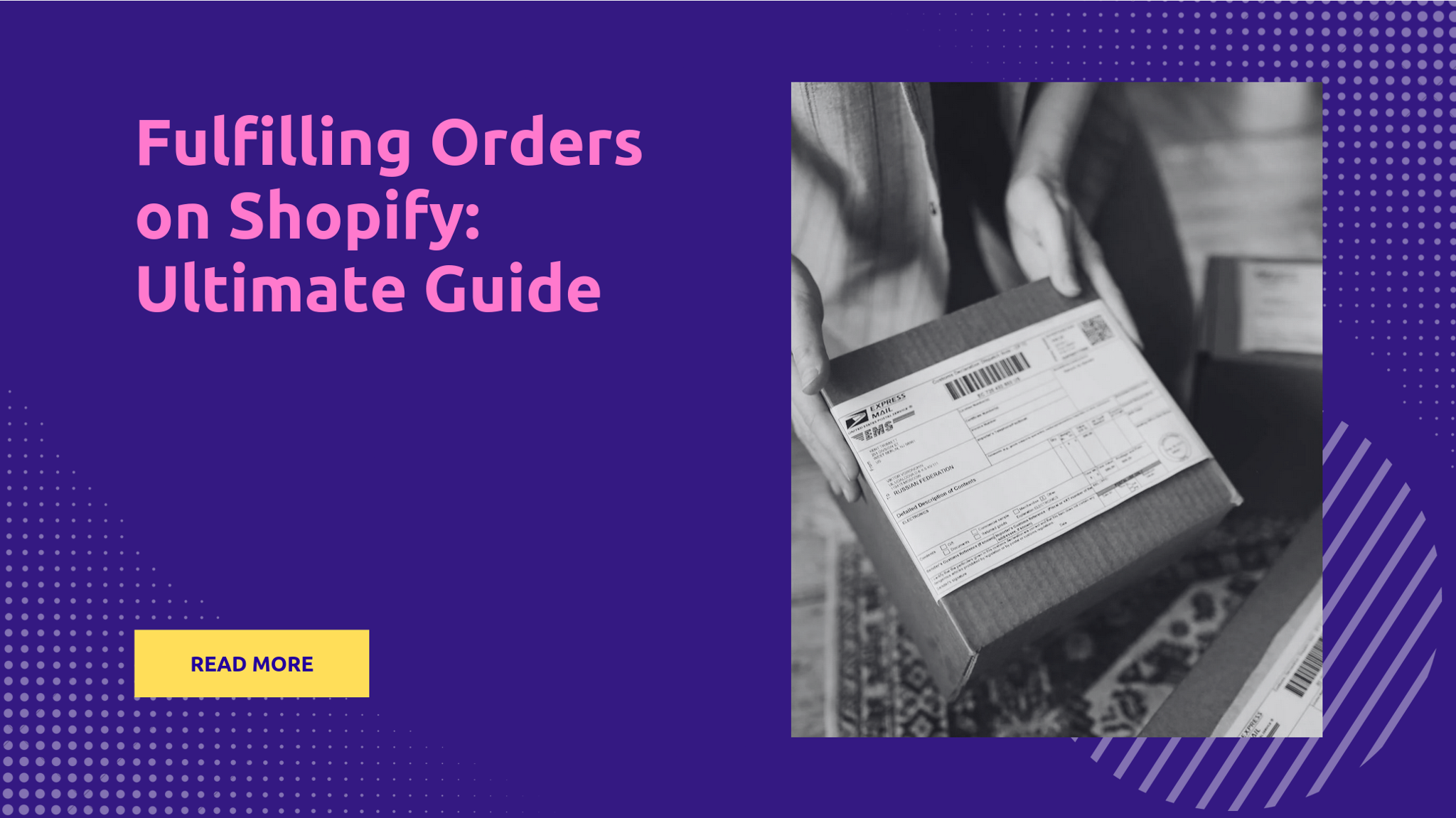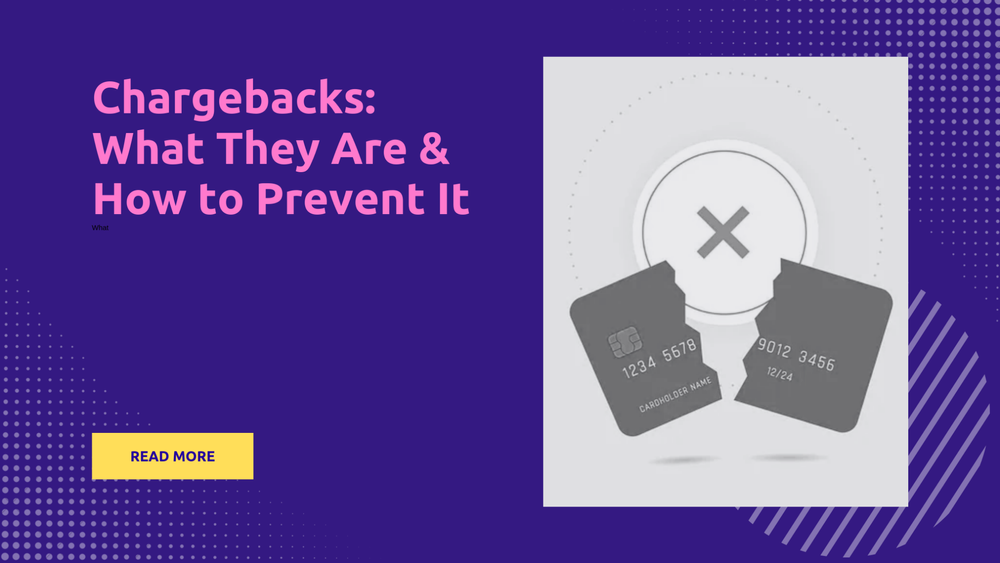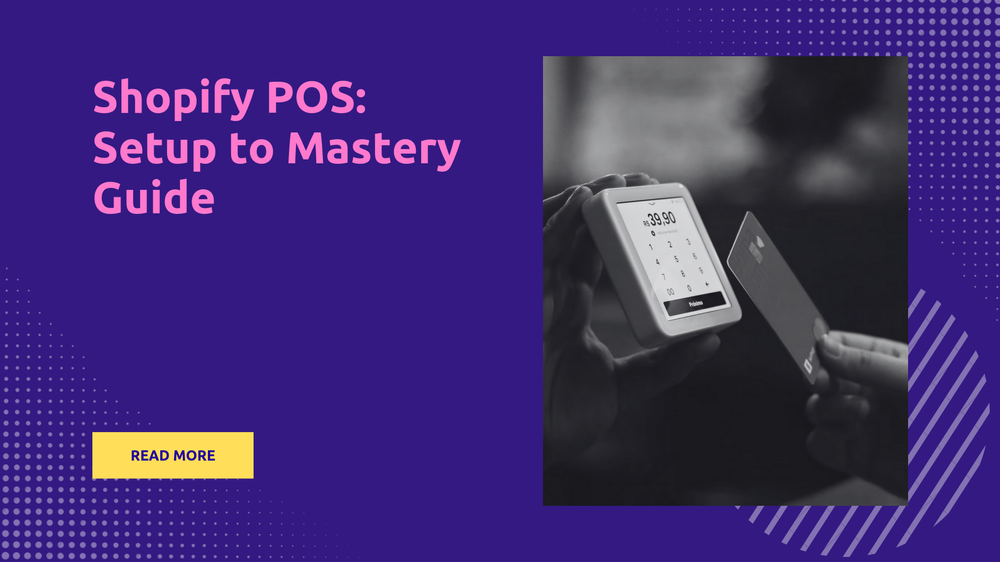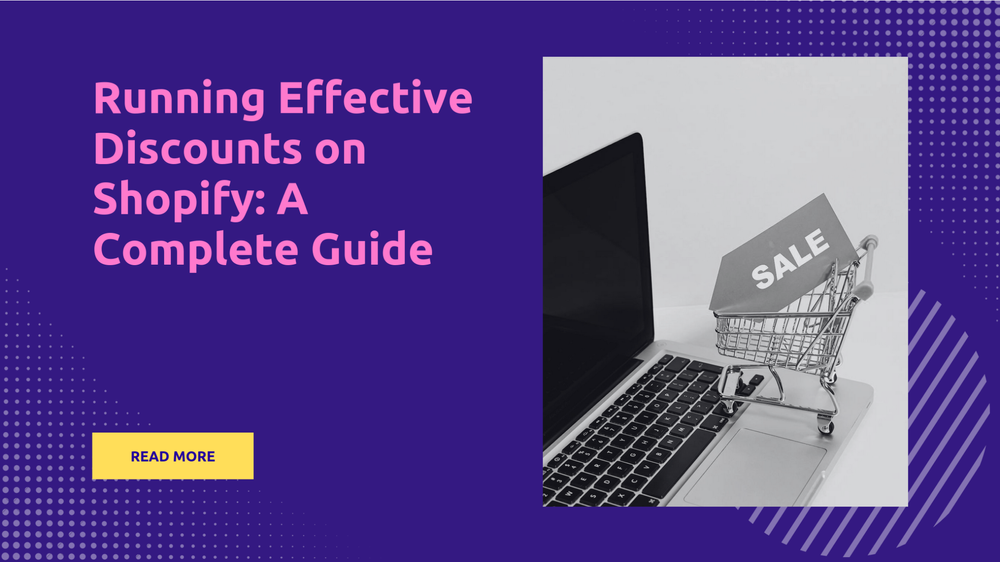Everything You Need to Know About Fulfilling Orders on Shopify
By Abhishek Sebin on

Running a successful Shopify store involves more than just listing great products; it's also about getting those products into your customers' hands smoothly and efficiently. This process, known as order fulfillment, can make or break your business. This article will guide you through everything you need to know, from choosing the right fulfillment method to optimizing your shipping process and keeping your customers happy.
We'll explore the different fulfillment options available to you, including in-house fulfillment, dropshipping, and using a 3PL, and we'll go deep into how to set them up on Shopify. You'll learn about best practices for picking and packing, how to manage your inventory, and how to provide a great post-purchase experience. Read on!
Understanding Order Fulfillment on Shopify
Getting your orders to your customers is key to running a successful Shopify store. You have a few ways to do this, and each has its own pros and cons. This section will walk you through the main options: doing it yourself (in-house), using dropshipping, and using a third-party (3PL). We'll help you figure out what's the best fit for you.
In-House Fulfillment
In-house fulfillment means you handle everything yourself. It's when you use your own team and resources to get orders out the door.
- What is it? It's where you manage the whole process yourself, using your own team and resources.
- What's involved? This includes keeping track of your stock, picking items from your shelves, packing them up, sticking on shipping labels, dropping them off or having them picked up, and keeping an eye on delivery.
- What do you need? You'll need space to keep stock, a team to get things done, and systems to manage your inventory and orders. You'll also need to deal with delivery partners.
Dropshipping
Dropshipping is a different way of doing things. You don't keep any stock yourself.
- What is it? It's like selling things without having them yourself. A supplier keeps the stock and ships the products straight to your customers.
- What do you need to think about? Choosing a good supplier is super important. You also need to make sure their shipping is quick and reliable.
- What could go wrong? Shipping can sometimes take longer, and you don't have much say over the whole process. You're also relying on their stock levels and quality.
Third-Party Logistics (3PL)
With a 3PL, you hand off the whole shipping process to someone else.
- What is it? You hire a company to handle all your shipping for you.
- What do they do? They store your stuff, keep track of it, pick items for orders, pack them up, manage returns, do custom packaging, and offer real-time tracking.
- How much does it cost? You pay for storage, picking and packing, shipping, and sometimes for using their technology.
In-House Fulfillment: Pros and Cons
- The good: You have total control over everything. There are no extra fees, and you get to know your products and suppliers really well. You can also create a unique branded experience for your customers.
- The bad: It takes a lot of time, can be hard to scale, and you need space to store your stuff. It can also slow down your business and needs a big investment in space, equipment, and staff. Is it right for you? That depends on if you're ready for a lot of work.
Dropshipping: Pros and Cons
- The good: You don’t need to hold any stock. You only pay for what you sell, making it easy to grow.
- The bad: You have less control over shipping and inventory. You also rely on the supplier, and shipping can sometimes take a while.
Using a 3PL: Pros and Cons
- The good: Scalability is a major benefit. You get their logistics expertise, advanced tech, and better shipping rates with established carrier relationships.
- The bad: You lose some control over shipping, it can be pricey upfront, you need to manage your relationship with them, and pricing can be a bit complicated. This also frees you up to focus on other things.
How to Pick the Right Method
Picking the right way to ship is about balancing a few things:
- Control: Doing it yourself gives you the most control. 3PL gives you less control and dropshipping gives you the least.
- Cost: Doing it in-house can get pricey. Dropshipping helps keep costs down, and a 3PL can save money when you're shipping a lot, but can add costs if sales volumes are low.
- Scalability: Scaling in-house is tough. 3PLs are great for scaling, and dropshipping is the easiest to scale.
- Expertise: If you do it in-house, you need to become an expert. 3PLs bring their own expertise, and dropshipping needs very little expertise.
- Focus: In-house takes time away from other things. With a 3PL you can focus on your main work, and dropshipping lets you focus on growing the business.
- Customer Experience: Doing it in-house lets you really personalize things, but it takes effort. 3PLs can help make the experience better, but you have less control. It's harder to control the customer experience with dropshipping.
Setting up Fulfillment on Shopify
Okay, you've picked how you want to handle shipping, now it's time to set it all up on Shopify. How you do this will depend on if you're shipping yourself, using dropshipping, or using a third-party logistics (3PL) service. This section will show you the steps for each.
Getting Started
First off, you'll need to decide which way you’re going to ship: in-house, dropshipping, or 3PL. The initial setup will look different depending on your choice.
Option 1: In-house fulfillment
In-house fulfillment means you handle all aspects of getting orders to customers yourself. The in-house fulfillment process involves receiving orders, picking the correct items from your inventory, and packing them with appropriate materials. This approach works best with a small, manageable inventory, when you need full control over the process or if you're focused on personalizing local deliveries.
While in-house fulfillment provides control, it can be time-consuming, space-constrained, and hard to scale as your business grows. You'll need to invest in equipment like shelving, packaging supplies, and potentially inventory software. But it's a good option for neighbourhood businesses that want to keep costs low and manage everything personally.
Option 2: Dropshipping
If dropshipping sounds like the right fit, you'll need to connect your Shopify store to your chosen dropshipping supplier. This usually involves using a dropshipping app from the Shopify App Store. Popular options include DSers, Spocket, and Syncee. These apps help you find products to sell, add them to your store, and automatically forward orders to your suppliers.
Once you've installed a dropshipping app, you can browse available products and add them to your Shopify store in just a few clicks. When a customer places an order, the app automatically sends the order details to your supplier, who then ships the product directly to the customer. The steps for setting up shipping with Shopify is the same whether you do dropshipping or use a 3PL.
Option 3: Connecting to a 3PL
If you're using a 3PL, you’ll need to link your Shopify store to their system. Here's how that usually goes:
- Log in to your 3PL account: Start by going to your account on their website.
- Find "Store Integration": Look for something like "Store Integration".
- Follow the steps: The setup will walk you through how to connect.
Setting Up Shipping in Shopify
At this point you should have decided between 3PL and dropshipping. Now let’s get into the Shopify side of things. To set up shipping:
- Go to "Shipping and Delivery": In your Shopify dashboard, go to "Settings" then "Shipping and Delivery".
- Click "Create New Profile" and give it a name like "Standard Shipping".
- Choose the products you want to include in the profile.
- Create Zones: You can set up different zones (which can be countries, regions, or continents) and decide how much you want to charge for each.
You'll also need to set up shipping rates:
- Rate Options: You can choose free shipping, flat rates (same price no matter what), rates based on the shipping company's prices, or rates based on the shipping zone you set above.
- Flat Rates: With flat rates, you set a fixed price, regardless of order size or destination.
- Carrier-Calculated Rates: Shopify connects to shipping companies to show real-time shipping costs at checkout.
- Free Shipping Threshold: Set this up to offer free shipping on orders over a certain amount.
Make sure you can see the right shipping costs at checkout, and adjust for specific products or regions if you need to.
Using Shopify Shipping
Shopify supports buying shipping labels through Shopify Shipping. You can:
- Buy Shipping Labels: Purchase and print labels directly from your dashboard.
- Get Better Rates: Shopify provides discounted rates with shipping carriers.
- Manage Shipping: Handle all your shipping from one place.
Using Shopify Fulfillment Network (SFN)
SFN is Shopify's own fulfillment service.
- What it is: It's similar to Amazon's FBA, they store your stuff, pick, pack, and ship orders.
- Good For: If you want to outsource the whole shipping process and handle more or less orders with ease, SFN can be a great option. It does mean you give up some control.
Shopify Shipping vs. Shopify Fulfillment Network (SFN)
Shopify Shipping gives you more freedom with rates and lets you add your own shipping accounts, while SFN is a fully standardized shipping solution that handles your storage and fulfillment from start to finish.
Picking a 3PL
When choosing a 3PL, think about:
- Tech and Integration: Make sure they have tech that integrates well with Shopify.
- Shipping: Check if their shipping fits your needs. For example, many 3PLs only support shipping within North America.
- Customer Support: Good support matters when issues come up.
- On-Time Delivery: Make sure they have a history of delivering on time.
- Cost Structure: Make sure their prices fit your budget
We have more to say on this in our 3PL guide for Shopify.
Optimizing Your Shopify Order Fulfillment Process
So, you've got shipping set up – now let's make it better. This section is all about fine-tuning your Shopify order fulfillment to make things smoother for you and your customers. We'll look at everything from managing your stock to using tech to speed things up.
The Importance of Accurate Inventory Management
Keeping your inventory accurate is key to good order fulfillment.
- Why it's important:
- Happy Customers: You won't run out of stock and disappoint customers.
- Save Money: You won't have too much stock sitting around.
- The Bad Outcome: When your stock levels are wrong, it can cause delays and frustration, leading to missed sales.
Imagine a customer ordering an item on your Shopify store only to be told later it's actually out of stock. That’s the kind of experience you want to avoid.
See our guide for Shopify inventory management.
Best Practices for Picking and Packing
When you're getting orders ready, keep these points in mind:
- Get it right: Use barcode scanners (either handheld or a mobile app) to make sure you pick the correct item.
- Packaging: Use the right materials to protect items during shipping. Consider custom packaging as well.
- Fragile items: Use extra padding, like bubble wrap, and strong boxes to keep them safe.
- Apparel: Use mailers or boxes that fit the items and prevent damage.
Generating Shipping Labels
Getting the shipping labels right is an important step:
- Shopify Shipping: Use Shopify Shipping to get lower rates, and buy and print labels directly from your dashboard. You can even print labels in bulk.
- Third-party apps: Apps, like ShipBob, connect to your Shopify so that orders are automatically sent to their warehouses for shipping.
- Make sure the details are correct: Always make sure labels include accurate delivery addresses.
Offer Customers Choice
Give your customers options for delivery to make them happy:
- Free Shipping: Offer free shipping when spend over a certain amount.
- Personal Touch: Customize packing slips and emails so customers know it’s you.
- Order Tracking: Let your customers see where their package is using an app like Postship.
- Easy Returns: Offer easy returns to increase repeat purchases. Our returns solution for Shopify encourages customers to opt for store credit instead of a full refund. This minimizes losses caused by returns while retaining the benefits of a simple return policy.
Streamlining Fulfillment with Technology
Using technology can help you make your work easier:
- Inventory Management: Keep track of your inventory in real-time with tools such as ShipBob's WMS, which helps prevent errors and gives you a clear view of all stock.
- Shipping Automation: Automate as much as you can by using 3PLs and Shopify Flow.
Postship's Role in Shopify Order Fulfillment
Postship has tools to take your fulfillment experience to the next level:
- Featureful Tracking Page: Provides a feature-rich tracking page that has upsells, shoppable videos, and more.
- Less "Where's My Order?": Reduces the number of customer inquiries about shipping because Postship keeps them updated throughout the process.
- Branded Tracking: Instead of sending your customers to a generic USPS or 17track page, keep them on your site.
- Real-time Updates: Keeps customers informed with real-time tracking notifications.
- Analytics: Get notified immediately if a shipment takes longer than usual to deliver so you can take action.
- Multiple Carriers: Supports over a thousand carriers and works well with any 3PL provider.
Tracking and Managing Orders
Once an order leaves your hands, it's time to keep your customers in the loop. This section covers why order tracking is so important, how to set it up well, and how to handle returns. Let's get into making things smooth after the sale.
The Importance of Order Tracking
- It builds trust. Real-time tracking makes customers feel good about ordering from you.
- It reduces stress. They can see where their package is, which means less worry.
- It can help you sell more. Our tracking pages drive 16% additional revenue through upsells.
Setting Up Tracking Notifications
Let's set up some useful shipping notifications to keep your customers up-to-date.
- Install Postship Order Tracking from the Shopify App Store and follow the setup instructions.
- Go to the "Notifications" tab and scroll down.
- Enable all customer notifications, as shown below.
That's it! Postship will automatically send shipping notifications to your customers when their order status changes.
Once this is done, you should also consider enabling the tracking page upsells to boost your revenue by upto 16%.
Effectively Managing Returns on Shopify
Returns happen. Make it easy for everyone.
- Clear policies. Having well-defined return policies ensures customers are not confused if they need a refund. Use our return policy generator to write a clear returns policy.
- Simple process. Make returns hassle-free for the customer with easy instructions.
- Smooth processing: Handle returns swiftly to ensure customer satisfaction.
Mistakes to Avoid in Order Fulfillment and Tracking
These mistakes will cost you and your customers. Be sure to avoid these common errors:
- Running out of stock: Be sure to track and replenish inventory so you don't run out of items.
- Slow shipping: Try to deliver promptly so customers do not get discouraged. If you're dropshipping, this might mean keeping a buffer of your popular products locally.
- Incorrect package sizes: To save on costs, use the smallest box that will fit your product. Check out USPS' guide to parcel sizes.
- Inadequate packaging materials Don't cheap out on padding your package. Not adding enough padding can cause breakage in transit which will just make your customers angry.
- Forgetting to add tracking numbers: Shopify lets you enter tracking numbers for your fulfillments, be sure to always add it to avoid keeping your customers in the dark. Your 3PL should support automatically adding tracking numbers.
How Postship Can Help
Let's look at Postship. It's a tool made to make things better after a customer buys something from your Shopify store. This part will show you how Postship can help your business.
Postship: Making Things Better After the Sale
Postship focuses on how your customers feel after they buy from you. It helps take the hassle out of tracking and keeps them happy and informed. This boosts your brand and helps your business grow.
What Postship Does
Here’s what Postship offers:
- Automatic Order Tracking: It tracks your shipments for you.
- Branded Tracking Pages: It lets you make custom tracking pages that keep your brand consistent.
- Works with Many Carriers: It integrates with over 1400 shipping companies.
Updates That Customers Actually Want
Postship's automation keeps customers up-to-date, meaning fewer "Where's My Order?" questions:
- Fewer Customer Inquiries: Postship has cut those inquiries by up to 65%. Customers know where their stuff is, without even having to ask!
- Brand Consistency: These custom pages help keep your brand image strong, which helps you sell again.
- Simple Tracking: Postship gathers all your shipment tracking data in one place, which helps you manage everything easily.
- Customizable Notifications: You can set up email and SMS updates that fit your needs.
- Detailed Reports: The reports give you information to make smart choices.
- Tracking Pages That Help Sales: Turn tracking pages into a way to sell more.
- Rich Integrations: It's designed to integrate with platforms like Attentive, Gorgias, and Klaviyo letting you use your favourite workflow.
Schedule a demo to see how Postship can supercharge post-purchase for your brand.
Conclusion
Fulfilling orders on Shopify for the first time can seem complex, but with the right approach, it can become a smooth and efficient part of your business. We've explored the main methods, from handling everything yourself to using dropshipping or a 3PL, and each has its own benefits and challenges.
Optimizing your fulfillment process is essential to not only meet, but exceed, customer expectations. This means paying attention to the details, from accurate inventory management to efficient picking and packing, and from offering a variety of shipping options to providing clear and timely order updates. By embracing technology, like inventory management systems and automated shipping tools, you can transform your shipping from a source of potential problems into a competitive advantage. Understanding and applying these principles will set you up for success on Shopify.




